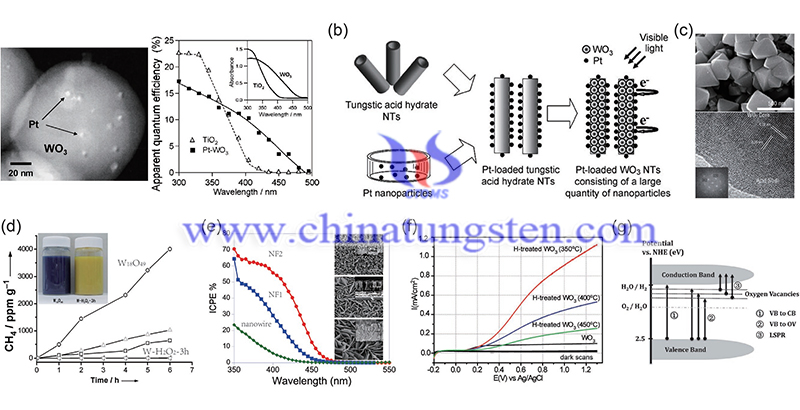Tungsten Oxide and Its Application in Nanotechnology
- Details
- Category: Tungsten's News
- Published on Thursday, 15 December 2022 10:33
In the last decade, nanostructured transition metal oxides (TMOs) have attracted a lot of attention due to their unique chemical and physical properties. Tungsten oxide (WO3-∂) represents an attractive material for flat panel devices, smart windows, anti-glare mirrors, as well as in the nanotechnology etc. In particular, W18O49 has been explored for many applications, such as gas sensors, photocatalysis, and catalysis of electrochemical processes.

(Credit: Shan Cong et al./AdvancedMaterials)
Therefore, the controlled production of WO3-based nanostructures in the presence of surface conditioning agents has become important, especially due to their flexible processing chemistry.
Nano-technology is becoming the most important force in the development of science and technology, which has increased the speed of memory chips. The term "nanotechnology" is derived from the Greek word "nanos", meaning "dwarf". The technology combines the perceptions and terminology of many different kinds of science, such as physics, chemistry, biology and engineering, which complement each other. Therefore, nano-technology must be considered as one of the most important technologies of the future. It deals with atomic structures smaller than 100 nanometers.
In the future, WO3-based nanotechnology may be used to find cancer cells and destroy them without harming any surrounding tissue; it may also be used to launch thousands of robotic probes simultaneously via the space shuttle, which will be smaller than insects and each programmed to perform a task in conjunction with all other probes. Nano-technology will create the ability to create reasonably priced products with dramatically improved performance.

(Credit: Shan Cong et al./AdvancedMaterials)
Nano-technology encompasses the production and application of physical, chemical and biological systems ranging from individual atoms or molecules to submicron sizes, as well as the integration of the resulting nanostructures into larger systems. The realization of nano-technology promises revolutionary capabilities.
Nano-technology has a profound impact on our economy and society at the beginning of the 21st century, comparable to the impact of semiconductor technology, information technology, or cellular and molecular biology. Scientific and technological research in nano-technology promises breakthroughs in materials and manufacturing, nanoelectronics, medicine and health care, energy, biotechnology, information technology, and national security.
Reference: V Hariharan, B Gnanavel, R Sathiyapriya, V Aroulmoji. A Review on Tungsten Oxide (WO3) and their Derivatives for Sensor Applications. International journal of advanced Science and Engineering, Mahendra Publications, 2019, 5, pp.1163 - 1168. ff10.29294/ijase.5.4.2019.1163-1168ff. ffhal-03093589
- Tungsten Manufacturer & Supplier, Chinatungsten Online: www.chinatungsten.com
- Tungsten News & Prices of China Tungsten Industry Association: www.ctia.com.cn
- Molybdenum News & Price: news.molybdenum.com.cn
- Tel.: 86 592 5129696; Fax: 86 592 5129797; Email: sales@chinatungsten.com



 sales@chinatungsten.com
sales@chinatungsten.com